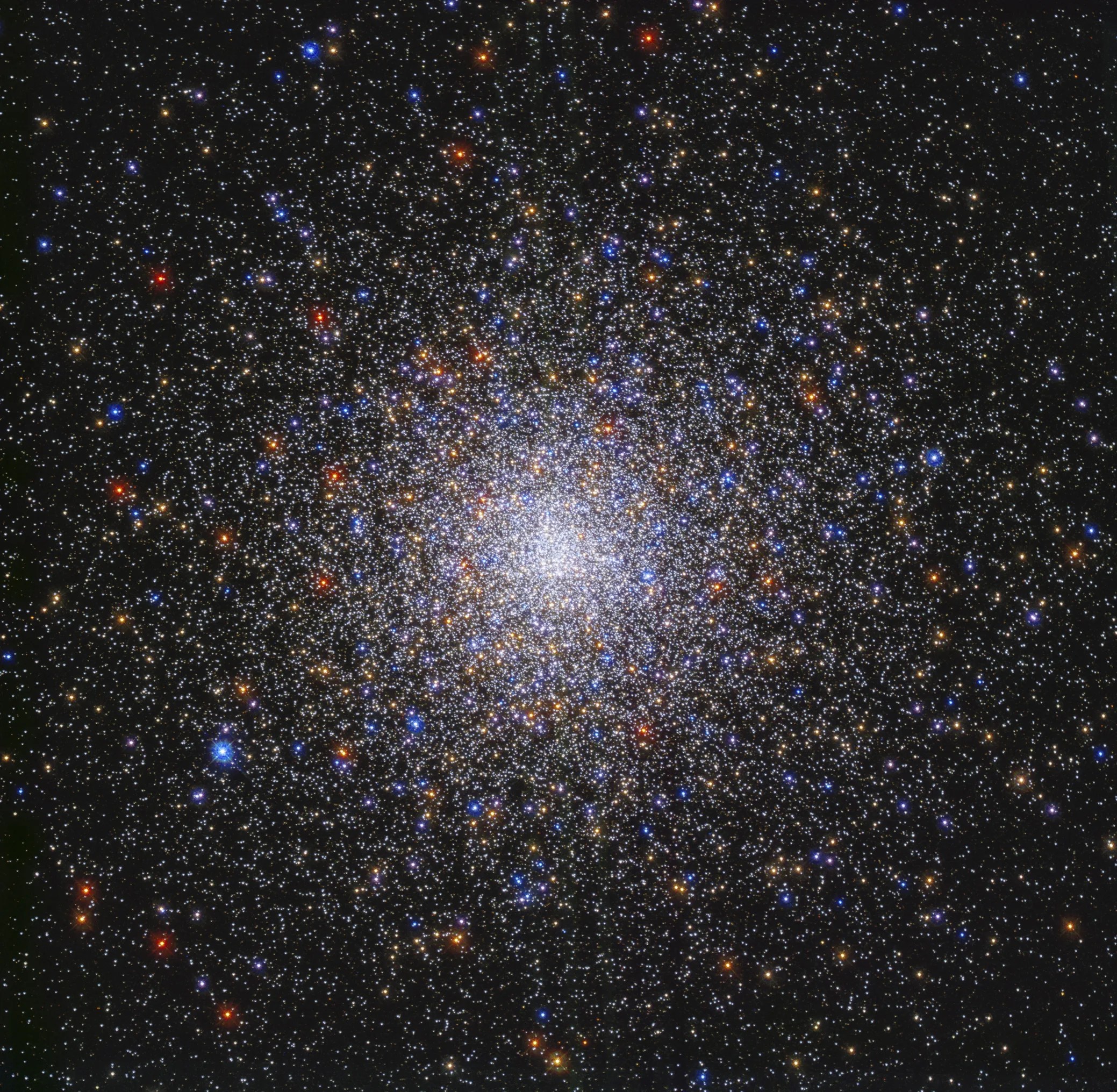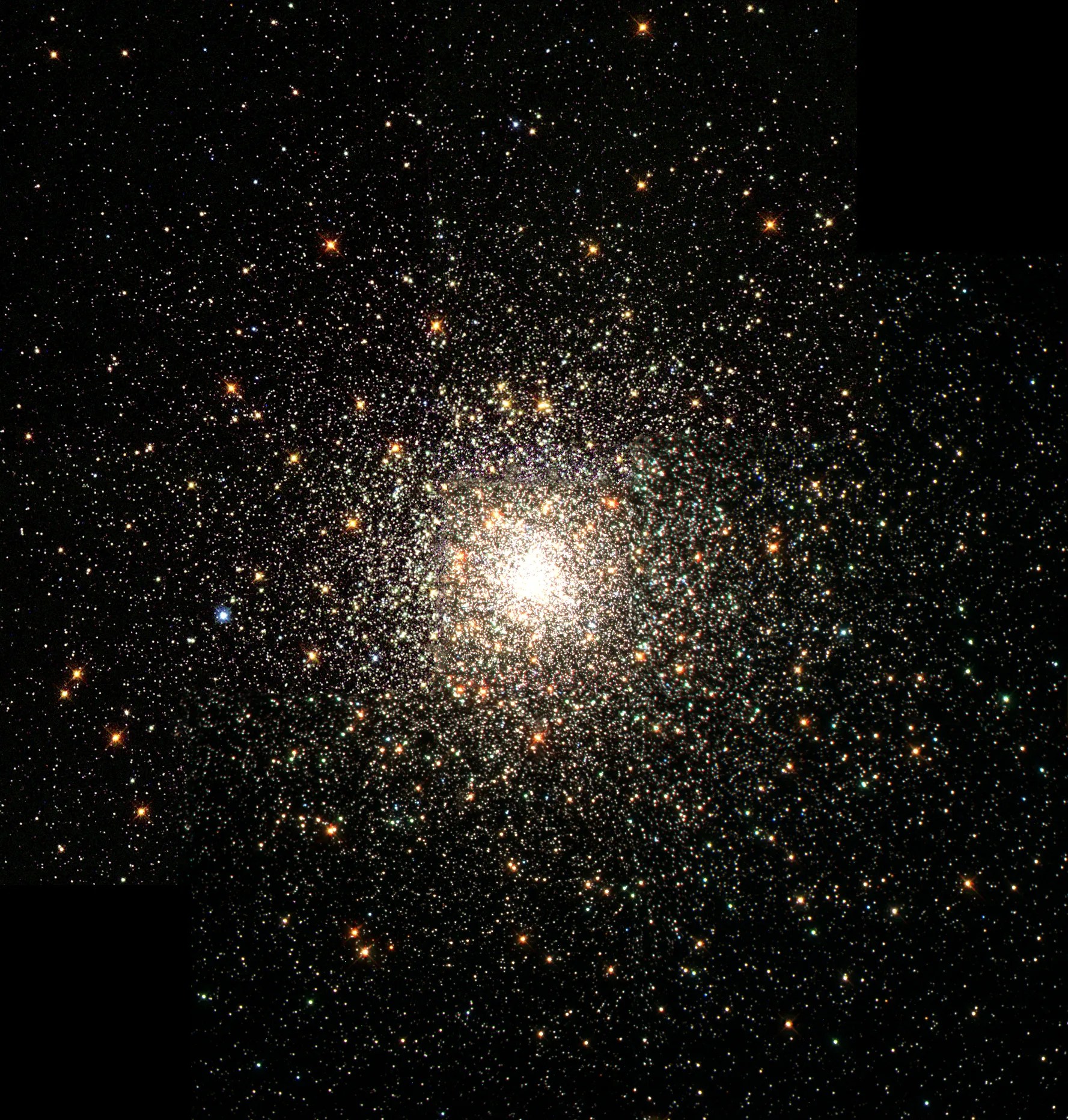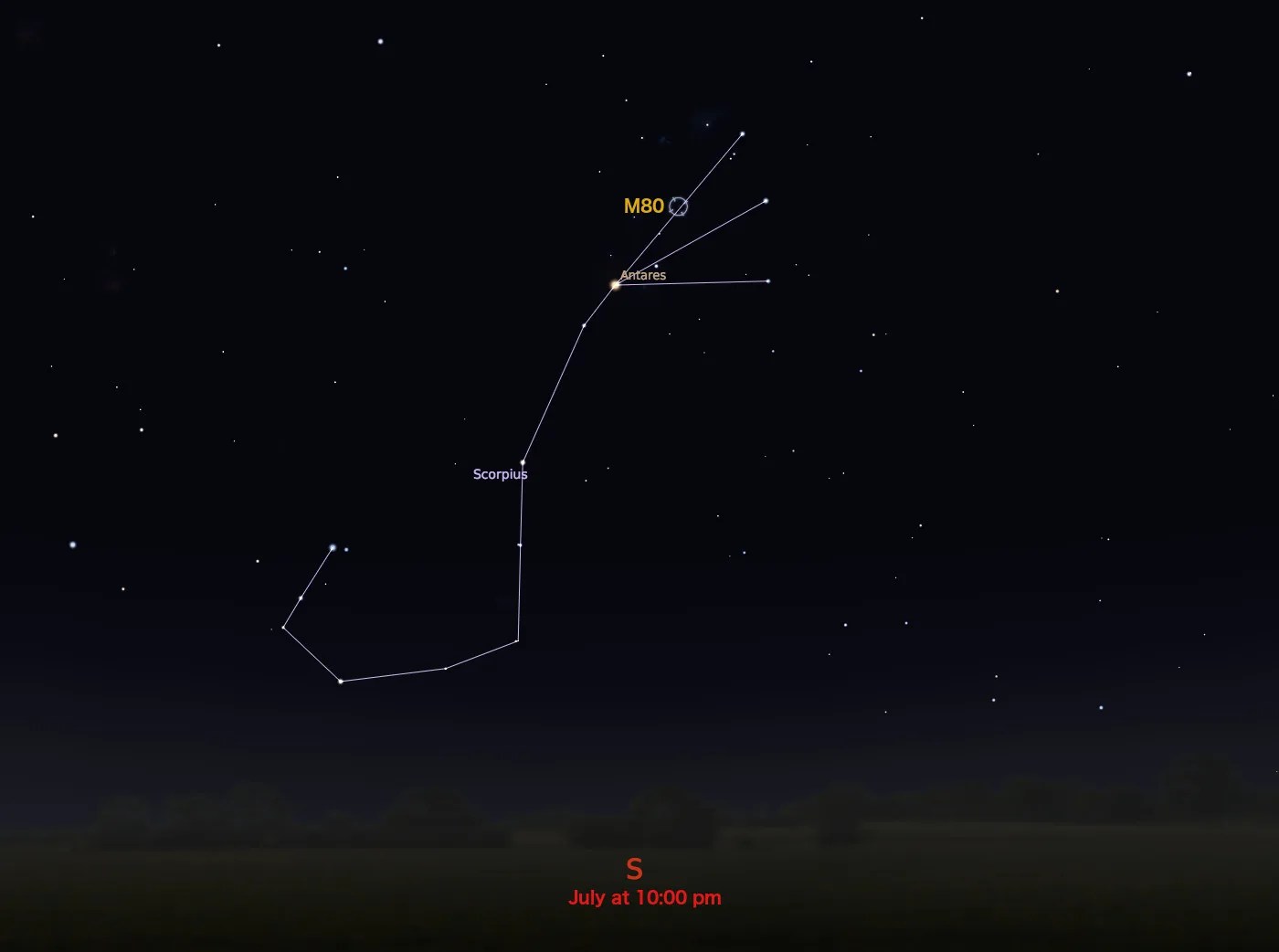Messier 80
Hubble’s ultraviolet observations of this globular cluster helped astronomers identify the remains of a nova-producing white dwarf.
Distance
28,000 light-years
Apparent Magnitude
7.9
constellation
Scorpius
object type
Globular Cluster

This stellar swarm is M80, one of the densest of the approximately 150 known globular clusters in the Milky Way galaxy. Located about 28,000 light-years from Earth in the constellation Scorpius, the cluster contains hundreds of thousands of stars that are held together by their mutual gravitational attraction. M80 has an apparent magnitude of 7.9 and was discovered by Charles Messier in 1781. It can be spotted with a small telescope most easily during July.

M80 is notable for being the site of a nova in the year 1860. Nova outbursts can occur when a close companion star transfers fresh hydrogen fuel to a burned-out white dwarf. Eventually the hydrogen ignites a thermonuclear explosion on the surface of the white dwarf, giving rise to the nova outburst. Hubble’s ultraviolet observations of M80 helped astronomers identify the hot, faint remnant of the nova-producing white dwarf.
Hubble’s examination of M80’s core has also revealed a large population of blue stragglers – stars that appear to be unusually young and more massive than the other stars in a globular cluster. M80 contains more than twice as many of these unusual stars than any other globular cluster surveyed by Hubble.
For more information about Hubble’s observations of M80, see:

Explore Hubble's Messier Catalog
The following pages contain some of Hubble’s best images of Messier objects.

Messier 1 (The Crab Nebula)
Better known as the Crab Nebula, Charles Messier originally mistook Messier 1 for Halley’s Comet, which inspired him to create…

Messier 2
Hubble's image of Messier 2 is comprised of visible and infrared wavelengths of light.

Messier 3
Messier 3 holds more than 500,000 stars.




